Architectural Visualization: AI-Generated Renderings and Virtual Reality
In the world of architecture, visualization plays a pivotal role in conveying design concepts, ideas, and spaces to clients, stakeholders, and the public. Traditionally, architects used hand-drawn sketches, physical models, and 2D renderings to communicate their visions. However, Artificial Intelligence (AI) has ushered in a new era of architectural visualization. AI-powered tools transform the field by generating realistic renderings and creating immersive Virtual Reality (VR) experiences. In this article, we will delve into how AI is enhancing architectural visualization through these technologies, revolutionizing the way architects and clients perceive and interact with architectural designs.
The Importance of Architectural Visualization
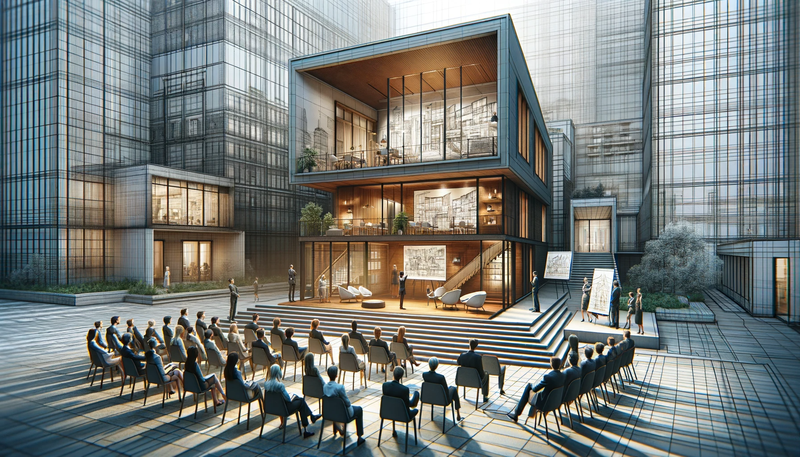
Architectural visualization serves as a bridge between abstract design concepts and tangible reality. It allows architects to convey their ideas and designs to a diverse audience, including clients, investors, planning authorities, and the public. Effective architectural visualization:
- Facilitates Understanding: Visualization helps stakeholders grasp the spatial relationships, aesthetics, and functionality of a building or space.
- Fosters Decision-Making: Clients and investors can make informed decisions based on a visual representation of the final product, reducing uncertainties and misunderstandings.
- Streamlines Communication: Visualization acts as a common language that architects, clients, and other professionals can use to communicate and collaborate effectively.
- Elicits Emotions: Well-crafted visualizations evoke emotional responses and can convey the intended atmosphere and ambiance of a design.
- Supports Marketing: High-quality visualizations are crucial for marketing and promotional materials, helping architects secure projects and funding.
Historically, architectural visualization was a labour-intensive process, often involving manual rendering techniques or the use of early computer-aided design (CAD) software. These methods had limitations in terms of realism and interactivity. However, AI has changed the game by offering powerful tools for generating highly realistic renderings and immersive VR experiences.
The Role of AI in Architectural Visualization
AI's impact on architectural visualization is multifaceted and transformative. It offers several key capabilities that enhance the visualization process:
Realistic Renderings
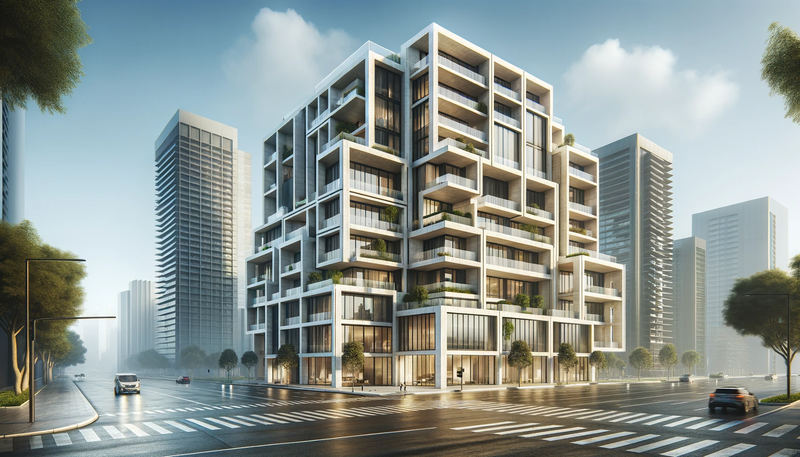
AI algorithms can generate photorealistic renderings from 3D architectural models. Their attention to detail, lifelike lighting, and natural materials characterize these renderings. AI can simulate the interplay of light and shadow, the texture of surfaces, and even the effects of weather, resulting in visuals that closely resemble real-world scenes.
Generative Design
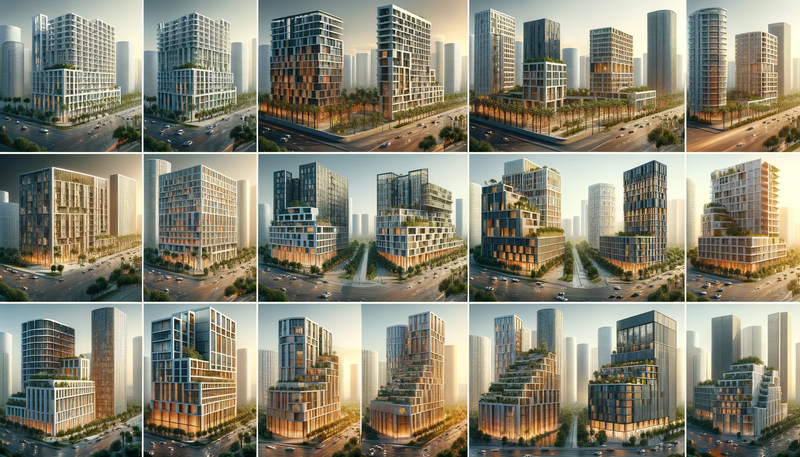
Generative design is a powerful AI-driven capability that enables architects to explore multiple design iterations rapidly. AI algorithms can suggest various design options based on input parameters and constraints, such as site conditions and project goals. This not only speeds up the design process but also fosters creative exploration by proposing alternative solutions that architects might not have considered.
VR and Immersive Experiences
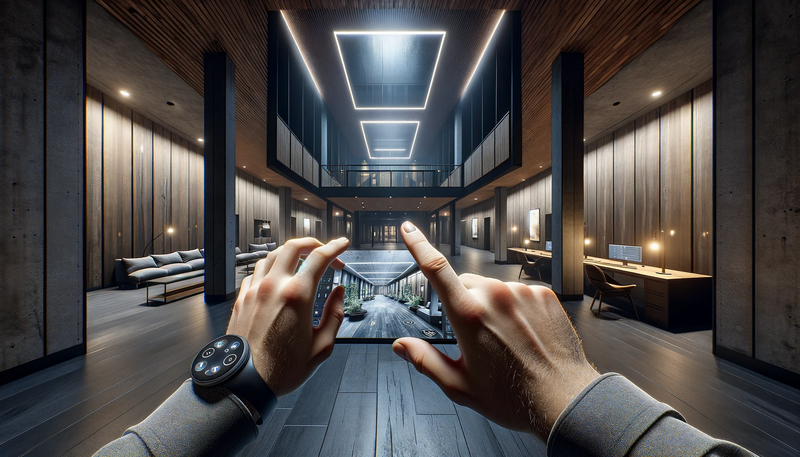
AI can facilitate the creation of immersive VR experiences that allow stakeholders to explore architectural designs in three dimensions. These experiences go beyond traditional 3D models by providing a sense of scale, depth, and presence. Users can navigate through spaces, interact with elements, and gain a more comprehensive understanding of the design.
Data-Driven Decision-Making
AI can analyze vast datasets related to architectural design, construction, and performance. By processing this data, AI can provide insights into aspects such as energy efficiency, structural integrity, and occupant comfort. These data-driven insights empower architects and clients to make informed decisions about design choices.
Speed and Efficiency
AI-powered visualization tools significantly reduce the time and effort required to create renderings and immersive experiences. Tasks that once took days or weeks can now be completed in a fraction of the time, enabling architects to iterate and refine designs more quickly.
Customization and Personalization
AI can tailor architectural visualizations to specific client preferences. Whether it's adjusting lighting conditions, interior furnishings, or landscaping elements, AI allows for customization that resonates with the client's vision.
AI-Generated Realistic Renderings
One of the most prominent ways AI is enhancing architectural visualization is through the generation of realistic renderings. AI algorithms can process 3D models and convert them into lifelike images that closely resemble actual photographs. Here are some key aspects of AI-generated realistic renderings:
Detail and Texture
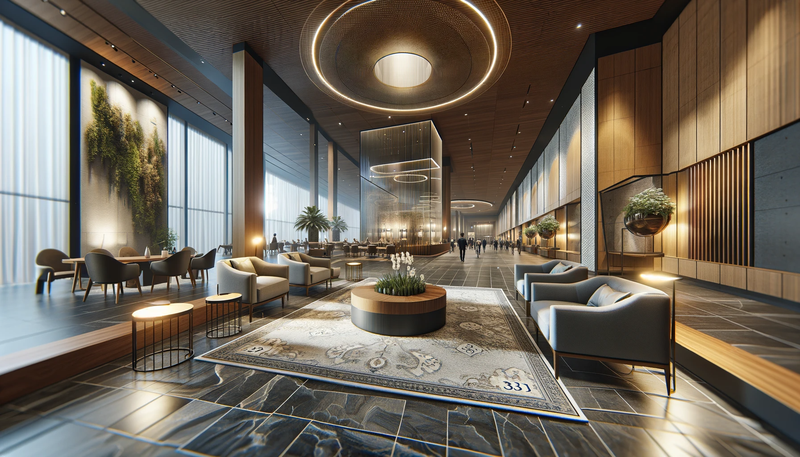
AI excels at capturing the intricate details and textures of architectural elements. From the grain of wood to the imperfections in concrete, AI can replicate materials with astonishing accuracy.
Lighting and Shadows
Realistic renderings depend on the interplay of light and shadow. AI simulates natural and artificial lighting conditions, including the way light diffuses and creates shadows, resulting in indistinguishable visuals from photographs.
Weather and Atmosphere
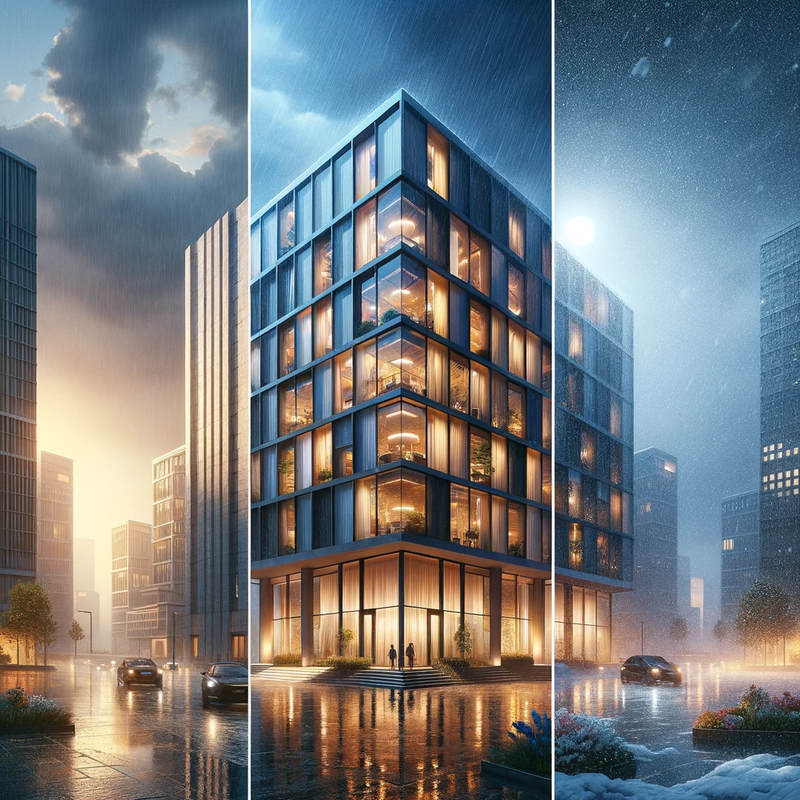
AI can introduce weather and atmospheric effects into renderings. For example, it can simulate rain, fog, or the warm glow of a sunset, helping stakeholders visualize the impact of weather on the design.
Scale and Perspective
AI-generated renderings accurately convey the scale and perspective of architectural spaces. This is valuable for conveying the sense of grandeur or intimacy that a design aims to achieve.
Contextual Realism
AI can incorporate surrounding environments into renderings. For example, it can seamlessly integrate a proposed building into an existing urban context, showing how it fits within the surrounding neighbourhood or landscape.
Time of Day
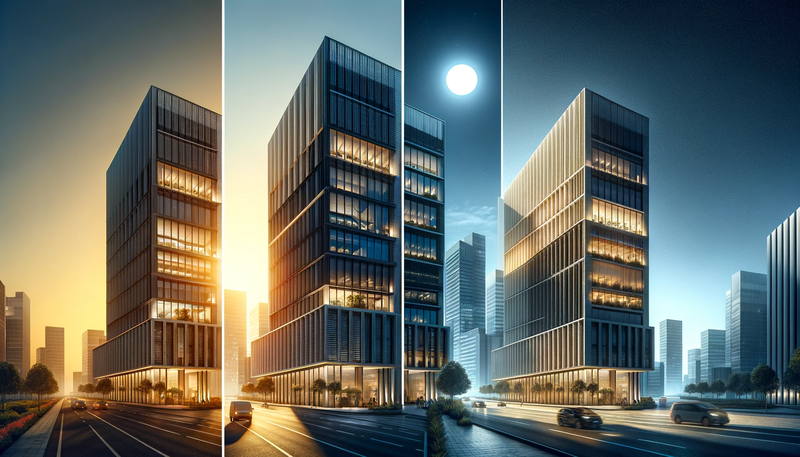
AI can adjust the time of day in renderings, allowing stakeholders to view how a design appears in different lighting conditions, from the brightness of midday to the warmth of dawn or dusk.
Immersive VR Experiences
While realistic renderings provide static visuals, AI also enables architects to create immersive VR experiences that transport stakeholders into virtual architectural environments. These experiences offer several advantages:
Realistic Interaction
VR experiences allow users to explore architectural spaces as if they were physically present. They can move through rooms, inspect details up close, and gain a sense of scale and proportion.
Client Engagement
VR experiences are highly engaging and can captivate clients and investors. They offer a level of interactivity that static images cannot match, making it easier for clients to envision the final product.
Design Evaluation
Architects can use VR to assess design choices from a user's perspective. This enables them to identify potential issues and make adjustments before construction begins, reducing costly changes later.
Remote Collaboration
VR experiences support remote collaboration among project stakeholders. Architects, clients, and other team members can meet in virtual spaces, review designs, and provide feedback regardless of their physical locations.
Marketing and Sales
VR can be a powerful marketing tool. Developers and architects can use VR to showcase properties to potential buyers or investors, allowing them to explore spaces before construction is complete.
Real-World Examples of AI-Enhanced Architectural Visualization
AI-driven architectural visualization is not confined to research and development; it is already being employed in real-world projects. Here are a few notable examples:
The Opportunity Project by Zaha Hadid Architects
Zaha Hadid Architects used AI and machine learning to generate a series of design proposals for an urban development project called "The Opportunity Project." AI algorithms analyzed site data, regulations, and project goals to propose design alternatives that optimized factors such as land use, spatial distribution, and accessibility.
AI-Generated Art Gallery by Nvidia
Nvidia, a leading AI technology company, created an AI-generated art gallery as a demonstration of the capabilities of AI in architecture and design. The gallery featured AI-generated artworks, architectural renderings, and VR experiences that showcased the intersection of AI and creativity.
AI-Enhanced Visualization for Sustainable Design
AI is being used for visualizing and optimizing sustainable building designs. AI algorithms can simulate the energy performance of buildings, analyzing factors such as solar exposure and ventilation to design energy-efficient structures. These simulations are visualized through AI-generated renderings to convey the potential benefits of sustainable design to clients and stakeholders.
The Benefits of AI-Enhanced Architectural Visualization
Integrating AI into architectural visualization offers many benefits that extend beyond aesthetics:
Enhanced Communication
AI-generated renderings and VR experiences provide architects with highly effective tools for communicating design intent to clients, investors, and the public. They bridge the gap between technical drawings and layperson's understanding.
Improved Decision-Making
Stakeholders can make more informed decisions by experiencing designs in VR and studying realistic renderings. This reduces misunderstandings, enhances collaboration, and leads to better design choices.
Streamlined Design Iteration
AI speeds up the design iteration process. Architects can quickly generate alternative designs and evaluate them in VR, enabling faster decision-making and design refinement.
Risk Mitigation
VR experiences allow architects and clients to identify potential issues and design flaws early. This reduces the risk of costly changes during construction.
Marketing and Sales
High-quality VR presentations are invaluable for marketing architectural projects, whether they are residential developments, commercial spaces, or public buildings. The immersive nature of VR can attract buyers and investors.
Sustainability and Efficiency
AI-driven simulations of building performance can optimize designs for energy efficiency and sustainability. By visualizing the environmental impact of design choices, architects can create greener, more efficient buildings.
Ethical Considerations in AI-Enhanced Architectural Visualization
As with any AI application, we must consider ethical considerations in architectural visualization:
Privacy
When using VR for project collaboration, ensuring the privacy of users in virtual meetings is essential. Data collected during VR sessions, such as user behaviour and interactions, should be handled responsibly.
Bias in Design
We should scrutinize AI algorithms used in design generation for bias. Biased algorithms can lead to designs that inadvertently perpetuate discriminatory or undesirable features.
Accessibility
We should design VR experiences with accessibility in mind, ensuring that they are usable by individuals with disabilities. This includes considerations for those with visual or mobility impairments.
Data Security
Architectural data, including 3D models and VR environments, must be securely stored and protected from unauthorized access or data breaches.
Consent and Data Collection
When users engage with VR experiences, they should grant their consent for data collection and usage. Users should have control over the data they share during VR interactions.
The Future of Architectural Visualization with AI
The future of architectural visualization is undeniably intertwined with AI. As AI technology continues to advance, we can expect the following developments:
Hyper-Realistic Renderings
AI algorithms will continue to improve, leading to even more hyper-realistic renderings that are virtually indistinguishable from actual photographs. This level of realism will become the norm in architectural presentations.
Personalized Experiences
VR experiences will become highly personalized, adapting to individual preferences and allowing users to customize elements within virtual environments, from lighting conditions to furniture choices.
AI-Generated Design Proposals
AI will not only assist in visualization but also in generating entire design proposals. Architects may collaborate with AI algorithms to create innovative and efficient designs that align with project goals and constraints.
Seamless Integration with BIM
AI-driven architectural visualization will seamlessly integrate with Building Information Modelling (BIM) systems. This integration will enable real-time updates of VR models based on design changes in the BIM environment.
Accessibility and Inclusivity
VR experiences will prioritize accessibility and inclusivity, ensuring that everyone, regardless of physical abilities, can engage with and benefit from immersive architectural visualization.
Remote Collaboration
The capabilities of AI-powered VR will continue to support remote collaboration, allowing architects and clients to interact and collaborate from anywhere in the world.
Sustainability by Design
AI will play an integral role in designing more sustainable and environmentally responsible buildings. Architects will use AI-generated simulations to optimize designs for energy efficiency and eco-friendliness.
Conclusion
AI-driven architectural visualization represents a groundbreaking shift in the way architects and stakeholders perceive, communicate, and interact with architectural designs. Realistic renderings and immersive VR experiences powered by AI offer architects, clients, and the public a deeper understanding of architectural spaces and a means to explore and experience designs in ways previously unimaginable.
As AI technology continues to evolve, architects are presented with an array of tools and possibilities to enhance creativity, streamline collaboration, and make more informed design decisions. The fusion of AI and architectural visualization not only elevates the field but also paves the way for more sustainable, inclusive, and visionary architectural designs that shape the built environment of the future. The architects of tomorrow will not only design with bricks and mortar but also harness the power of AI to shape the way we experience and inhabit the surrounding spaces.
Our Services
View some of our most popular services below.











